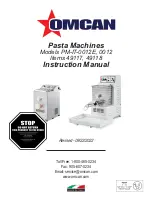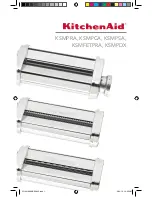
B3970
HOW TO CLEAN YOUR BREADMAKER
Before cleaning your breadmaker, please ensure it is no longer activated, it has
sufficiently cooled down and the plug has been disconnected from the power socket.
Exterior
Clean the outside of your appliance and its viewing window with a damp cloth or a
sponge. Take out the bread pan before you start cleaning. If necessary, you can clean
the exterior of the appliance with a mild detergent.
Interior
Gently clean the inside of the appliance with a lightly damp cloth. Be careful when
cleaning the heating element.
Bread pan
you can clean the bread pan with warm water. Be careful not to damage the non-stick
coating. In case the kneading paddle gets stuck, allow the bread pan to cool down
completely. Next, gently pour a little bit of warm water into the bread pan until the
kneading paddle is under water. The sticky bits will dissolve and you will be able to
remove the kneading paddle easily.
Never use cleaning products or dishwashing brushes, for they may damage the non-
stick coating of the bread pan. The bread pan must not be cleaned in the dishwasher.
HOW TO BAKE A DELICIOUS BREAD:
A few practical suggestions
Please make sure your ingredients are at room temperature and that they are carefully
weighed. Add the ingredients in the right order. you should only use fresh ingredients.
The yeast needs to be the last ingredient you put in the bread pan. Put the yeast into
a little hole in the flour, thus ensuring it does not come in contact with the added salt,
sugar, water or milk. you can verify the freshness of your yeast by submitting it to the
following test: dissolve 1 teaspoonful of sugar in half a cup of lukewarm water and
subsequently add the yeast to this mixture. If the substance starts sparkling and boiling
after a few minutes, you can be sure that you are using fresh yeast.
Approximately 5 to 10 minutes after your breadmaker has been activated, you can
equally test the quality of the dough. The dough should look like a smooth and elastic
round ball. Open the lid and gently touch the top of the dough with your fingers. Be
careful and make sure the kneading paddle remains in action. If the dough somewhat
sticks to your fingers, this implies the dough is going to be fine. Should the dough
however stick to the bread pan, then it is probably too moist. If the dough does not
stick to your fingers at all, the pastry you are making is too dry.
Salt brakes the effect of the yeast and sugar exactly does the opposite. If you are not
allowed to use either sugar or salt for dietary reasons, you must not add the other
ingredient either. your bread will not contain sugar or salt.
If you want to start baking another bread straight away, you will first have to allow the
61






































